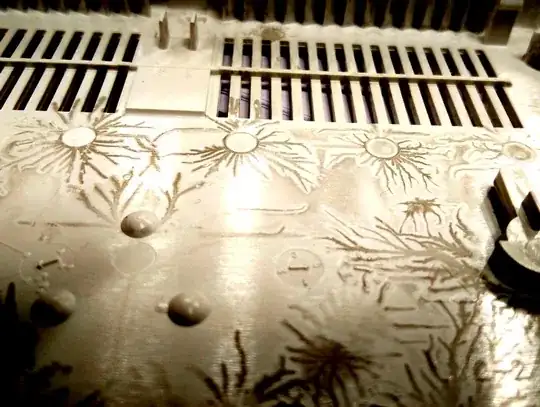(Note: another similar question from a few years ago yielded nought but speculation. I have at provided some detailed observations in the hope that the community can come up with something rigorous as an explanation...)
We disassembled an electronic product and found this interesting pattern of dust on the plastic (ABS, HDPE or similar material)...
Observations:
- The dust is easily wiped off.
- There is no cooling fan in the product and it was situated in an unventilated cupboard. Any airflow would be a result of thermal convection for the most part.
- It's an old broadband/DSL router which ran from a 12V wall wart ("double insulated" so no Earth-ground connection).
- The patterns seem to congregate around some of the minor injection-moulding features (known as "ejector marks", the 4 small circular features are almost co-planar with the main surface surrounding them, they are extremely shallow and have a slightly different surface finish to the rest of the plastic).
- The appearance of the features ("lightning" springs to mind) suggests to my mind that this is some sort of electromagnetic / electrostatic effect.
- The plastic is not coated with any kind of electrically conductive EMC coating.
- The circuitry housed within doesn't seem to indicate any particular correlation between the placement of electronic components and the locations of the dust patterns. The features of the plastic case seem to be a more significant catalyst for the formations.
Questions:
- How do these interesting patterns form?
- What is the composition of the dust likely to be (e.g. metallic or something else?).
- Why does the shape of the plastic seem to catalyse these weird shapes?
- Why the lightning / fractalline appearance?
